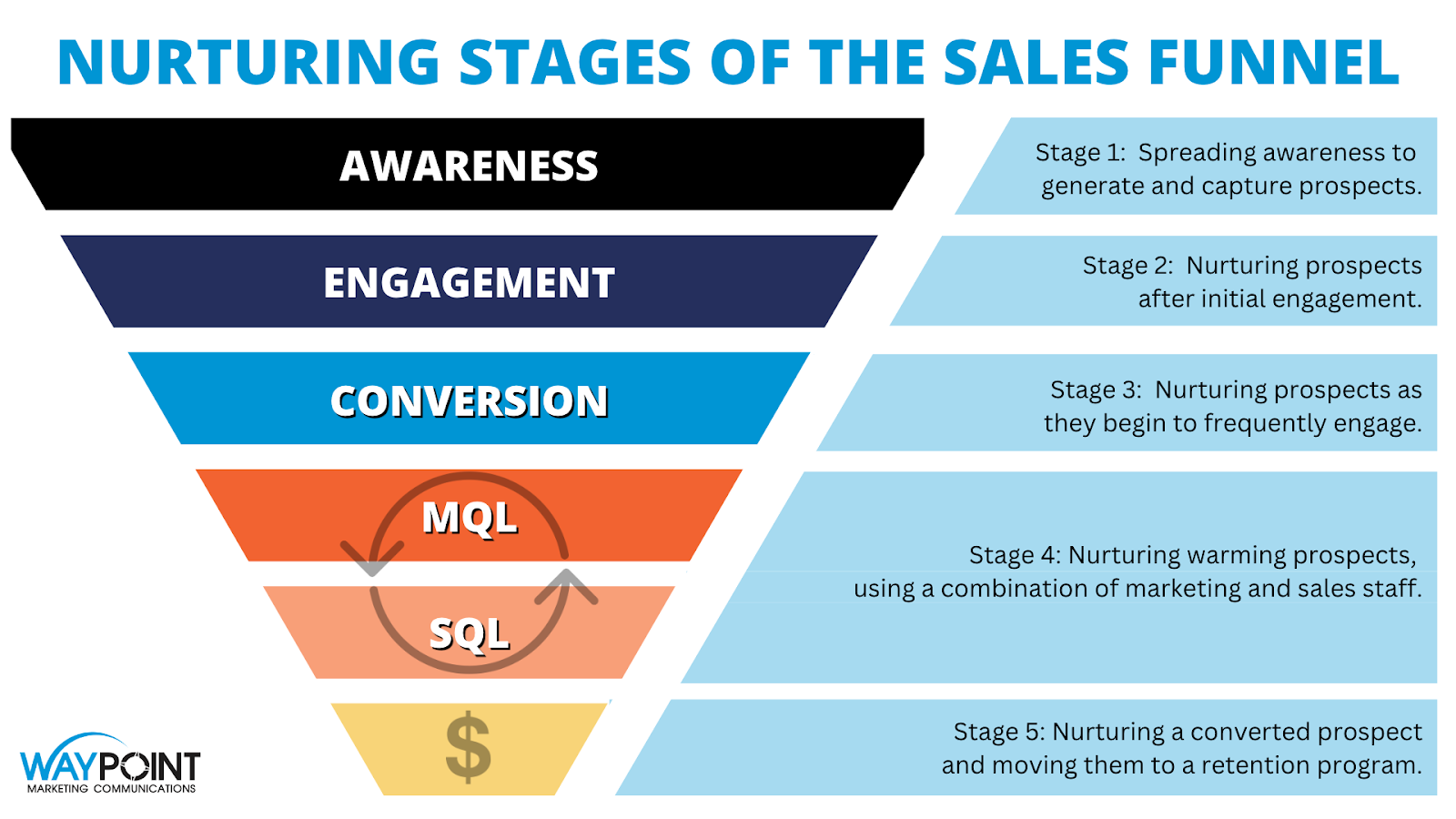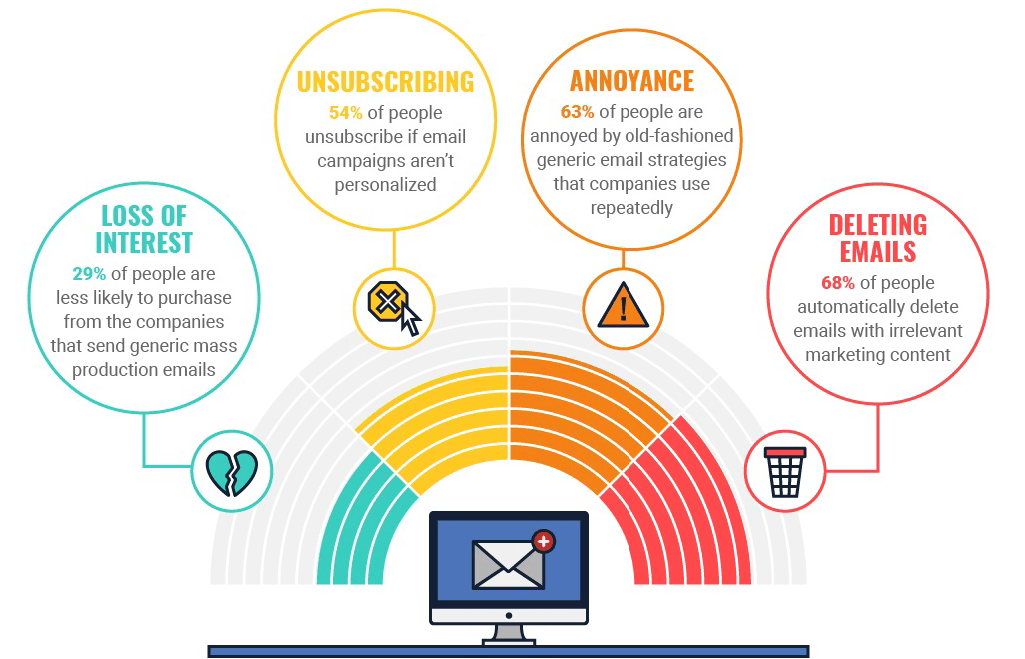The Importance of Lead Nurturing in Your Lead Generation Strategy
Lead nurturing is essential in effective lead generation strategies, focusing on building and maintaining relationships with potential customers throughout the sales funnel. This approach centers on understanding prospects’ needs and providing relevant information to foster trust and connection with your brand.
By emphasizing consistent engagement over one-time interactions, lead nurturing enhances conversion rates and customer loyalty. It shifts the focus from short-term gains to long-term relationships, essential for sustained business growth. This article will explore key aspects of lead nurturing, its role in boosting lead generation, and offer practical tips to improve your marketing efforts.
Quick Takeaways
- AI marketing allows for highly personalized customer experiences by analyzing behavior and preferences, thereby increasing engagement and conversion rates.
- By automating routine tasks, AI frees up marketing teams to focus on strategic and creative endeavors, optimizing resource allocation and reducing overhead.
- AI’s predictive analytics enable marketers to anticipate customer needs and market trends, allowing for more targeted and timely marketing strategies.
- Integrating AI into existing marketing systems poses challenges, requiring careful planning and investment but ultimately leading to more cohesive and dynamic marketing operations.
Understanding Lead Nurturing
Lead nurturing involves engaging with potential customers by providing them with targeted, relevant information at each stage of the buyer’s journey. This strategy is designed to support the gradual transition from initial awareness to making a purchase decision, ensuring that your brand remains top-of-mind.

Key Components of Lead Nurturing
- Segmentation: Dividing the customer base into distinct groups based on similar needs or characteristics to tailor messaging and offers.
- Content Personalization: Creating content that addresses the specific concerns and interests of each segment, making the communication more relevant and engaging.
- Multi-Channel Engagement: Using various channels such as email, social media, and personalized web content to interact with leads. This ensures that the message reaches the prospects in the medium they are most comfortable with.
- Lead Scoring: Assigning values to each lead based on their interaction with your content and their stage in the sales funnel. This helps prioritize which leads need more attention and are closer to a purchasing decision.
By integrating these components, businesses can develop a lead nurturing strategy that both informs potential customers and builds the foundation for strong, ongoing relationships.
The Importance of Lead Nurturing in Lead Generation
Lead nurturing is pivotal in transforming initial interest into confirmed sales, playing a vital role in enhancing the effectiveness of lead generation efforts.
Enhancing Conversion Rates
Nurtured leads produce a significant increase in sales opportunities compared to non-nurtured leads. Regular and relevant engagement keeps your brand at the forefront of prospects’ minds, increasing the likelihood of conversion when they are ready to purchase.
Building Relationships
Effective lead nurturing is based on trust and relevance. By consistently providing valuable information and demonstrating understanding of the prospect’s needs, companies establish themselves as trusted advisors. This trust is crucial for building long-lasting customer relationships.
Increasing Customer Lifetime Value
Customers acquired through effective lead nurturing tend to have a higher lifetime value. They are more likely to return for repeat purchases and can become advocates for your brand, further extending the reach and impact of your marketing efforts.
Challenges in Lead Nurturing
Despite its importance, lead nurturing faces several challenges that can impede its effectiveness. Addressing these challenges is crucial for developing a robust nurturing strategy.
Identifying and Segmenting Leads
The first challenge is accurately identifying and segmenting leads based on their behavior and demographics. Effective segmentation allows for more personalized and relevant communication, but it requires robust data collection and analysis systems.
Engagement Strategies
Maintaining consistent and meaningful engagement with leads can be demanding. Marketers must craft engaging content that appeals to different stages of the buyer’s journey and deliver it through the preferred channels of their audience.
Sales and Marketing Alignment
A common obstacle in lead nurturing is the misalignment between sales and marketing teams. Both departments need to work closely to ensure that marketing communications are timely and that sales can effectively follow up on nurtured leads.
Best Practices for Effective Lead Nurturing
Implementing best practices in lead nurturing can help overcome these challenges and maximize the effectiveness of your marketing efforts.
Personalization
Going beyond basic demographic targeting, personalization involves understanding and addressing the unique needs and interests of each lead. Use data insights to tailor messages and offers that resonate deeply with each segment.

Utilizing a Multi-Channel Strategy
Engage leads through multiple channels to increase the chances of your message being seen and acted upon. Whether through emails, social media, or personalized web experiences, consistent multi-channel communication helps nurture leads more effectively.
Importance of Timely Interactions
Timing is critical in lead nurturing. Engaging leads at the right moment, especially when they show increased interest or interact with your content, can significantly enhance the likelihood of progressing them through the sales funnel.
Leveraging Technology in Lead Nurturing
To scale and optimize lead nurturing efforts, leveraging the right technology is indispensable. Modern marketing technologies can automate repetitive tasks, provide deeper insights into lead behavior, and facilitate personalized engagement at scale.
CRM Systems
Customer Relationship Management (CRM) systems are foundational tools that help manage interactions with current and potential customers. They store valuable data on each contact, track their engagement history, and enable marketers to segment and target effectively.
Marketing Automation Tools
These tools automate key tasks such as sending out personalized emails based on specific triggers, scoring leads based on their engagement levels, and managing multi-channel marketing campaigns. Automation ensures consistency in communications and helps maintain a persistent presence in the prospects’ minds without manual intervention.
Analytics and Reporting
Utilizing analytics tools to monitor the effectiveness of different nurturing campaigns is crucial. These tools provide insights into what’s working and what isn’t, allowing marketers to continuously refine and improve their strategies.
Enhance Your Strategy with Lead Nurturing Today with Televerde
Lead nurturing is pivotal for converting prospects into loyal customers by fostering meaningful connections throughout the buyer’s journey. Effective strategies enhance customer engagement, improve conversion rates, and increase lifetime value. Prioritizing personalized and timely interactions through the strategic use of technology is essential for success.
Ready to elevate your lead nurturing efforts? Contact Televerde today to discover how our innovative strategies can enhance your customer relationships and drive your business growth. Don’t miss the opportunity to transform your lead generation into a powerhouse of customer loyalty and revenue.


